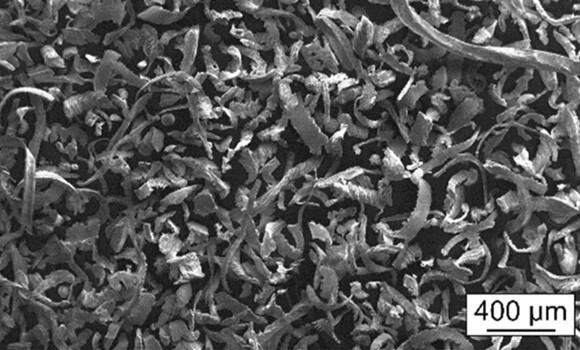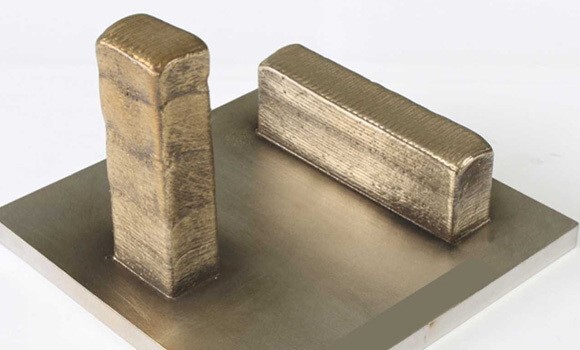

Researchers from the Fraunhofer Institute for Production Systems and Design Technology IPK in Berlin, Mecklenburger Metallguss GmbH in Waren, and Technische Universität Berlin have published a paper in Additive Manufacturing that examines the processability, microstructure, and mechanical properties of nickel-aluminium-bronze (NAB) grinding chips.

Nickel-aluminium bronze (NAB) is a copper-based alloy known for its strength and exceptional corrosion resistance particularly suited for marine environments. Typically, these alloys comprise 9-12 per cent aluminium, up to 5 per cent iron, and 3 per cent nickel.
These chips, a by-product of ship propeller production, were tested as feedstock for Directed Energy Deposition (DED) Additive Manufacturing. The study compared the 'chip-powders' produced through various comminution processes, including ball milling and impact whirl milling and re-melting via ultrasonic atomisation.
The researchers highlighted that these findings suggest recycling machining chips into Additive Manufacturing feedstock could reduce both material costs and environmental impact. They characterised the materials using digital image analysis, standardised flowability tests, scanning electron microscopy (SEM), and energy-dispersive X-ray spectroscopy and compared the feedstock with conventional gas atomised powder.
The specimens deposited through Directed Energy Deposition were then assessed for density, hardness, and microstructure. Additionally, tensile properties were also compared for both vertical and horizontal build-up directions.

Comminution via impact whirl milling at higher mill rotation speeds produced rounded particles with favourable flow properties and an ideal particle size distribution, making them suitable for Additive Manufacturing. The microstructure revealed characteristic martensitic phases, a result of the high cooling rates during the AM process.
Ceramic inclusions were observed both in the powder and on the tensile fracture surfaces, which slightly affected the mechanical properties. Nevertheless, specimens built in the vertical direction (Z) demonstrated competitive tensile performance, with a tensile strength of 775 MPa, yield strength of 455 MPa, and 12.6 per cent elongation at break.
Images' source: Müller, Vinzenz, et al / Metal AM
Responses








